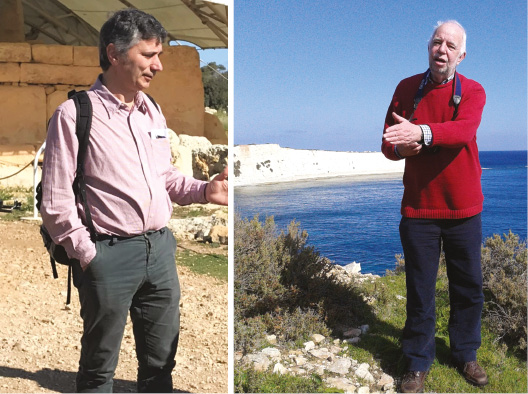My time as a PhD student at the Institute from 2000 to 2005 was not only formative, it was also life-changing. I had already spent some years working full-time as a curator in Malta’s National Museum of Archaeology when a generous Commonwealth Scholarship made it possible for me to become a full-time student again. I arrived at the Institute in October 2000, eager not to waste a single minute, spending much of my first year voraciously sitting in on any classes that were somehow relevant to my research on Malta’s prehistoric landscape or my interest in public engagement. Life at the Institute was a heady whirlwind of debate and ideas, which extended from the tightly knit camaraderie of our research room in B53, to evenings at the Phineas Bar and many sleepless nights in the GIS Lab till daybreak woke the birds in Tavistock Square. Both my supervisors were pillars of unfailing support, and Tim Schadla-Hall and Ruth Whitehouse are still the gold standard I try to live up to in PhD supervision. On one occasion when Ruth gave me a slot on the Accordia talks, John Evans, the former director of the Institute whose work on Maltese prehistory remains a key reference, came to listen, and later over a pizza in the basement of Pizza Paradiso related some stories he had never spoken about before, about his time as a code-breaker at Bletchley Park during the Second World War. Tim welcomed me into his masters in Public Archaeology classes and the legendary field-trips that punctuated that programme, which have shaped the worldview of a generation of practitioners who are today spread around the globe.
The Director of the Institute throughout my time there was Peter Ucko, who had spent much of his life pioneering a closer engagement of archaeological practice with the rights of First Peoples, and championing those rights. Thanks to his efforts, the themes of Indigenous and postcolonial archaeology were a key focus of debate at the Institute. I vividly remember the morning when Tim brought Peter into a class to give us his first-hand account of the struggles and soul-searching in which the World Archaeology Congress was created. The Institute often hosted guest speakers from different Indigenous groups from around the globe. We became so accustomed to being at the heart of a global debate led by Indigenous voices that only later did I realise what an extraordinary privilege it was to be a part of it. The lasting lesson that we all took away was that archaeology cannot be practised from an ivory tower. As practitioners, we need to comprehend the consequences of the way we conduct our research on the lives of marginalised groups, whom it may help empower or continue to dispossess. Coming from Malta, a former British colony, this resonated for me on many levels, and has remained a key research interest for me two decades later. It also became a leitmotif of many delightful conversations with Tim during his frequent visits to Malta, right up to the summer of 2022.
Back in Malta, I returned to my curatorial work, now as part of Heritage Malta, the newly created agency for heritage sites. My role was to lead the small but brilliant curatorial team entrusted with the management of the Neolithic monuments that make up two of Malta’s three UNESCO World Heritage Sites. I often found myself rummaging in the toolkit of concepts and values from those years at the Institute, adapting and applying them to new situations, and sharing them with others. In 2010, when I moved to my present role as a lecturer in cultural heritage management at the University of Malta, that toolkit continued to serve me well. The structure of the masters programme in Cultural Heritage Management that I have coordinated over the past decade was largely inspired by the model of the masters programmes at the Institute. From 2015 to 2020, the opportunity came to revisit and test some of the ideas in my PhD work on the Maltese Neolithic landscape, now as part of the much larger international team assembled by Caroline Malone for the FRAGSUS project, funded by the European Research Council. In 2022, a sabbatical year and a generous Shortland Jones Fellowship at the British School at Rome allowed me to pursue another long-standing research interest, the worldviews of antiquarians in the early modern period. Coming full circle, every time I am surprised afresh by the audacity of thought of those early modern thinkers, I am reminded how I learnt to embrace those same values in my time at UCL.


